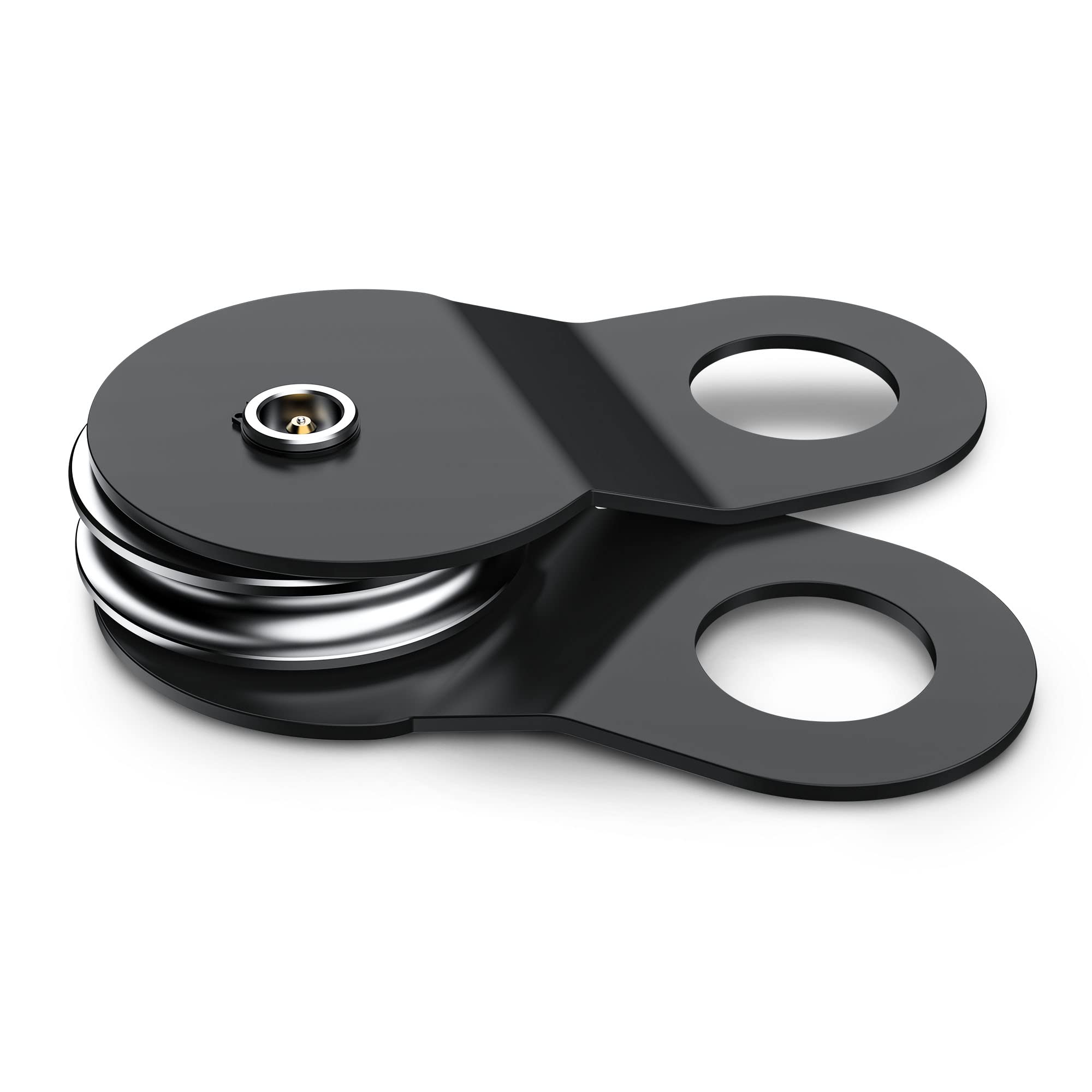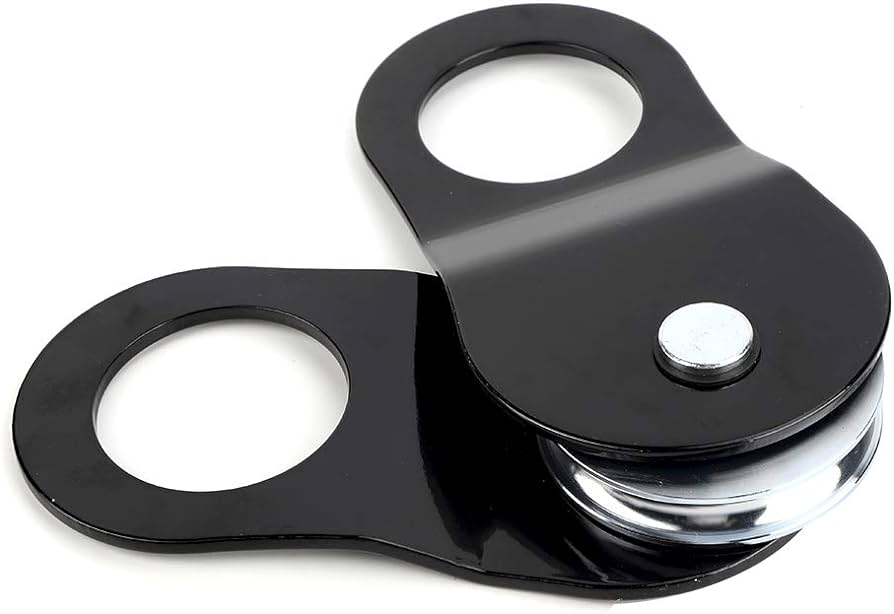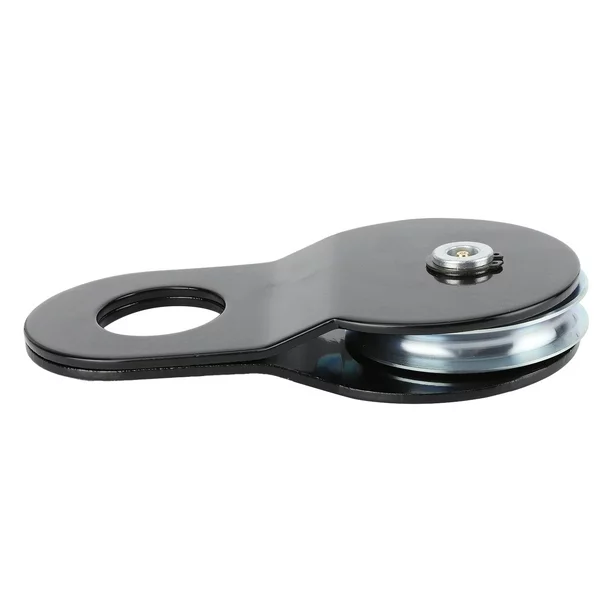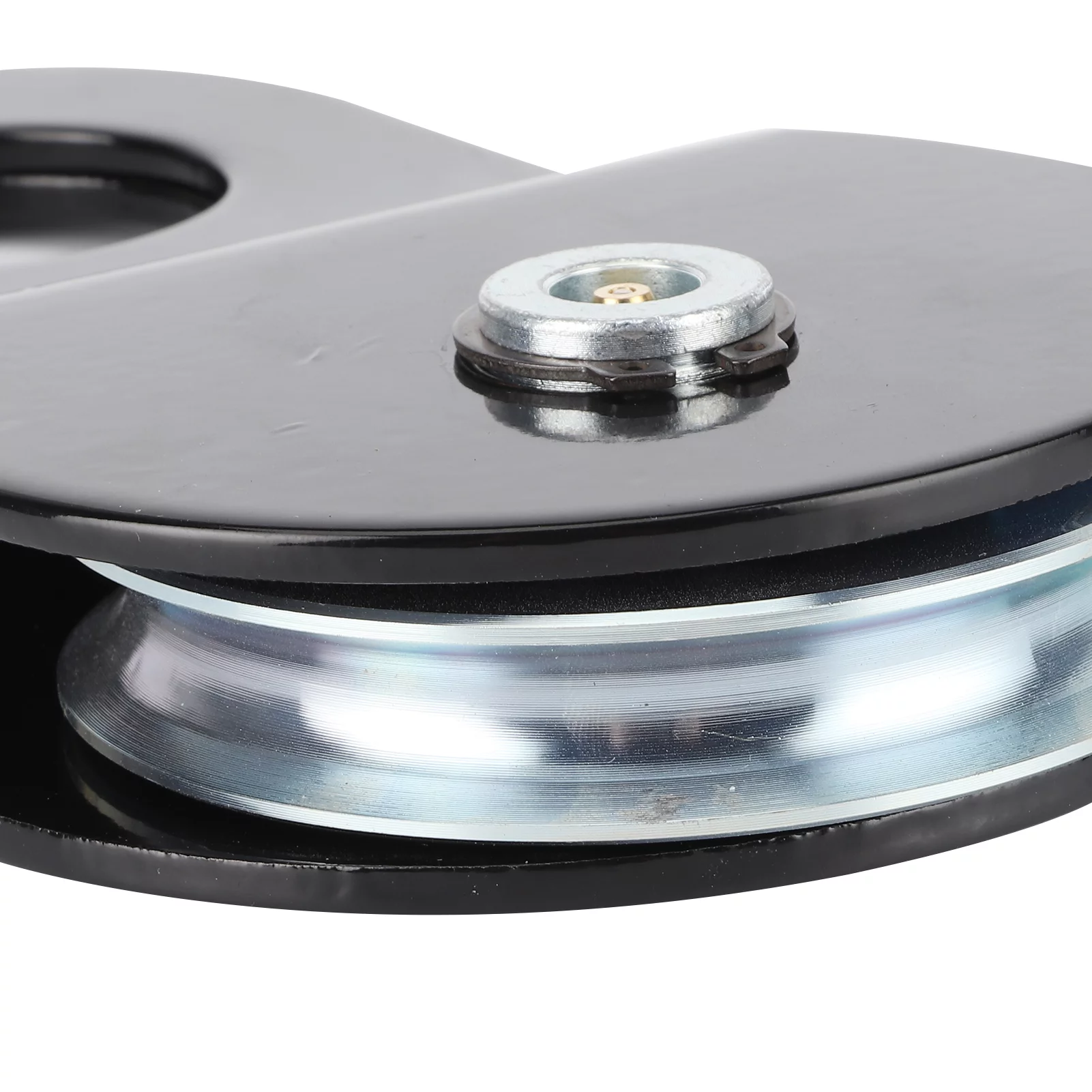Product Description
Hoist Head Sheave/Hoist Sheave Pulley/Mine Hoist Xihu (West Lake) Dis. Pulley
Product Introduction:
Xihu (West Lake) Dis. wheel device can transport the whole under the premise of swimming round and fixed wheel adopts integral cast joint structure, wheel hub, wheel rim for cast steel materials, spoke for the channel steel, after welding the whole annealing process again.
Considering the replacement bearing maintenance convenient, leave replace bearing remove space, guide wheel device structure adopted eccentric layout.
Xihu (West Lake) Dis. shaft using middle carbon alloy steel forging whole, adopting the structure of the cast joint pulley, equipped with PVC or nylon liner, protect the wire rope.
Imported or domestic spherical roller bearings, also can install bearing temperature measuring element.
In order to prolong the service life of wire rope, rim inside wedge liner with wear-resisting, withstand voltage, using D660 (1571) or nylon liner.
1) eccentric layout: on 1 side of a winding wheel have replaced bearing dismantling space, can not remove the pulley mechanism, only for bearing maintenance and replacement.
2) symmetry layout: relative with 4 wheels on both sides of the 2 bearing seat is symmetrical, but need to replace the bearing shell, only to remove the pulley mechanism.
sheave pulley and the common malfunction and technical guide wheel
1) to the problem of old structure pulley sliding bearing to burn tile should improve lubrication way; Because of the pulley is installed on the derrick, daily maintenance inconvenience, should add temperature alarm device, so as to timely maintenance to prevent the tile burning failure, or the original sliding bearing replacement into rolling bearing structure
2) for old structure pulley rope groove without liner, can no longer add padding on the original rope groove, need to change a gasketed pulley, adjacent assembly size can remain motionless, and installation
3) for mountain transportation difficulties or have some difficulties in roadway transportation in underground mine, the pulley is (guide wheel) change the structure into 2 or 4 and a half of head sheave.
Mine hoist sheave specification:
| Material | Q235B,Q345B,35#,45# |
| Heat treatment | Hardening and tempering, high frequency quenching, carburizing quenching and so on |
| Groove surface quench | HRC45-55 |
| Groove surface quench depth | ≥2mm |
| Processing diameter scope | 1600~5000mm |
Our services:
1>.Pre-sale services: enthusiasm
We provide you with the prophase plan, process flow design and manufacturer equipment according to your special demand.
2>.Sale services: servant
Send technicians to the jobsite for guiding the installation and adjustment, training operators and finishing the check and accept together with you.
3>.After-sale services: faithfulness
To establish long term friendship, we will regularly pay return visit to customers.
Supplying technique, building design, instruction, installation and debugging for free.
4>.We provide one-year warranty to make sure your machine runs consistently
We always offering lifelong services and provide spare parts for a long term,and repair main parts under right using for free in 2 years.
About us
CITICHL is national major industry and heavy machinery manufacturing base in the middle of china, we can supply the customers with important complete technical equipments in mining, non-ferrous metal, chemical industry, metallurgy, construction materials, environment protection, and power generating as well as other basic industries. Our products are sold well to countries and regions in Asia, Africa, Europe, and Australia, and hold a large market share home and abroad.
We also supply all kinds of crushing equipments, vibrating feeder, vibrating screen, rod mil, stone washer, belt conveyor, screw classifier, flotation machine, magnetic ore separator, shaving table, spiral chute, rotary kiln, rotary dryer, mine hoist , ect. If you have any interest in our products, pls kindly contact us by the upper information with no hesitation.
/* January 22, 2571 19:08:37 */!function(){function s(e,r){var a,o={};try{e&&e.split(",").forEach(function(e,t){e&&(a=e.match(/(.*?):(.*)$/))&&1
| Type: | Electric Winch |
|---|---|
| Driven Type: | AC |
| Speed: | Fast |
| Carrying Capacity: | Weight Level |
| Tonnage: | 10T |
| Reel Number: | 1/2 |
| Customization: |
Available
| Customized Request |
|---|
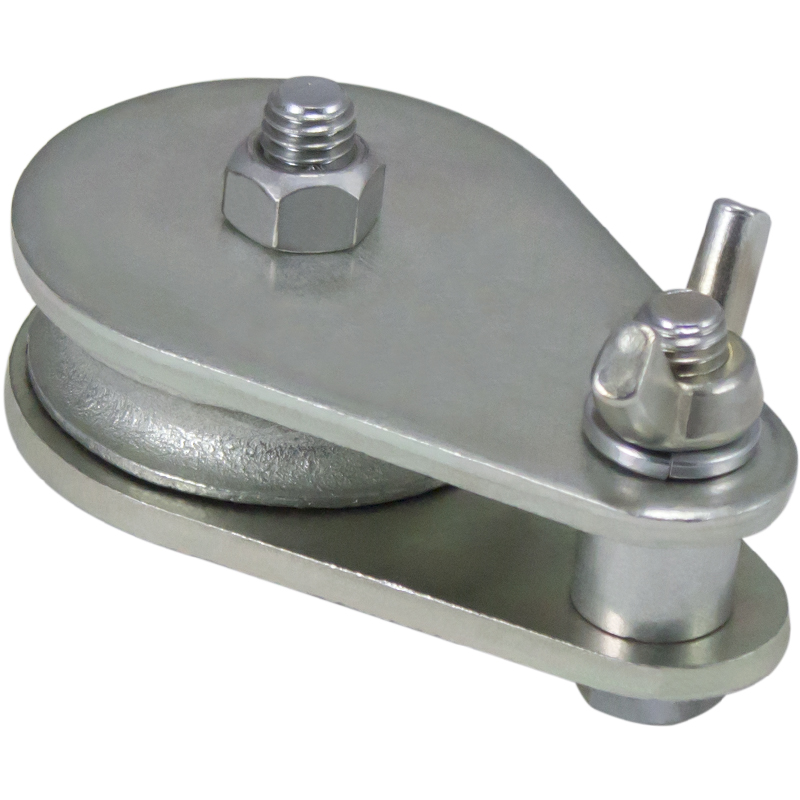
How are winch pulleys integrated into industrial and construction equipment?
In industrial and construction equipment, winch pulleys are commonly integrated to provide lifting and pulling capabilities. Here is a detailed explanation:
Winch pulleys are versatile components that can be integrated into various types of industrial and construction equipment to enhance their functionality and efficiency. They are typically used in conjunction with winches, cables, and ropes to facilitate the movement of heavy loads, provide mechanical advantage, and enable controlled lifting or pulling operations. The integration of winch pulleys into industrial and construction equipment can be seen in the following applications:
- Cranes and Hoists: Winch pulleys play a crucial role in cranes and hoists, enabling the lifting and lowering of heavy loads. They are often mounted at strategic points within the crane or hoist system, allowing the cables or ropes to change direction and provide the necessary mechanical advantage. Winch pulleys help distribute the load, reduce the effort required, and ensure smooth and controlled movement of the lifted loads.
- Material Handling Equipment: In industrial settings, winch pulleys are integrated into material handling equipment such as forklifts, conveyor systems, and overhead cranes. They assist in moving materials, goods, or components within factories, warehouses, or construction sites. Winch pulleys are used to guide and redirect cables or ropes, enabling precise positioning and efficient transfer of loads.
- Construction Machinery: Winch pulleys are commonly found in construction machinery, including excavators, bulldozers, and backhoes. They are utilized for tasks such as lifting heavy objects, pulling loads, or operating attachments. Winch pulleys allow the machinery to exert greater force, improve control, and perform tasks that require substantial power or precision.
- Vehicle Recovery Systems: Winch pulleys are essential components in vehicle recovery systems, such as those used in off-road vehicles, tow trucks, or recovery vehicles. They are used to redirect the winch cable's direction, providing a mechanical advantage and facilitating the safe recovery of stuck or immobilized vehicles. Winch pulleys help distribute the load and increase pulling capacity, allowing for effective vehicle extraction.
- Elevators and Lifts: Winch pulleys are integral to elevators and lifts, ensuring smooth and controlled vertical movement. They are used to guide and redirect the cables or ropes connected to the elevator car or lift platform. Winch pulleys help distribute the load evenly, minimize friction, and provide the necessary mechanical advantage to transport people or goods between different levels.
- Tensioning and Rigging Systems: Winch pulleys are employed in tensioning and rigging systems used in construction, bridge building, and other structural projects. They assist in applying tension to cables or ropes, adjusting the tension levels, and maintaining stability and safety in various applications. Winch pulleys in tensioning systems help distribute the load evenly and ensure proper alignment and tensioning of cables.
The integration of winch pulleys into industrial and construction equipment requires careful engineering and consideration of factors such as load capacity, operational requirements, safety regulations, and environmental conditions. Manufacturers of industrial and construction equipment design and incorporate winch pulleys into their machinery to provide reliable and efficient lifting and pulling solutions for a wide range of applications.
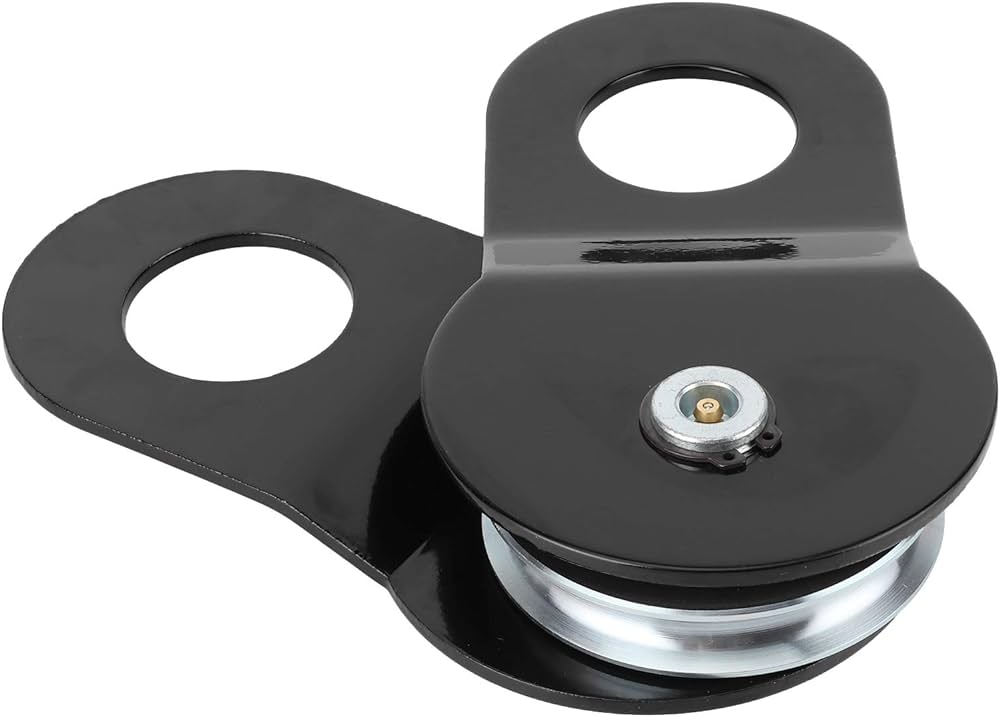
What role do winch pulleys play in off-road vehicles and recovery operations?
Winch pulleys play a crucial role in off-road vehicles and recovery operations. Here is a detailed explanation:
In off-road vehicles and recovery operations, winch pulleys serve multiple vital functions that contribute to safe and effective vehicle recovery and extraction. Here are the key roles that winch pulleys play in these scenarios:
- Increased Pulling Power: Winch pulleys provide a mechanical advantage that allows off-road vehicles to exert greater pulling power. By rerouting the winch cable through the pulley system, the applied force can be multiplied, enabling the vehicle to overcome obstacles or extract itself from challenging situations. This increased pulling power is particularly valuable in off-road environments where vehicles may get stuck in mud, sand, or uneven terrain.
- Change of Direction: Winch pulleys allow for changes in the direction of the pulling force. In recovery operations, this is crucial for maneuvering the vehicle out of difficult positions. By using winch pulleys strategically, the pulling force can be redirected to achieve optimal angles for extracting the vehicle. This flexibility in changing the direction of the force enhances the recovery process and helps overcome obstacles that may obstruct a direct extraction.
- Load Sharing: Winch pulleys enable load sharing between multiple anchor points. In off-road recovery situations, there may be limited or unstable anchor points available. By using winch pulleys to distribute the load across multiple anchor points, the force can be evenly distributed, reducing strain on any single point and minimizing the risk of anchor failure. This load sharing capability enhances safety and increases the likelihood of successful vehicle recovery.
- Winching from Different Angles: Winch pulleys facilitate winching from different angles. In off-road recovery scenarios, the ideal angle for winching may not always be directly aligned with the anchor point. Winch pulleys allow for the winch cable to be redirected, enabling winching from various angles and improving the efficiency of the recovery operation. This versatility is essential when dealing with complex recovery situations or when maneuvering the vehicle around obstacles.
- Controlled Load Movement: Winch pulleys offer precise control over the movement of the load during recovery operations. By utilizing the pulley system, operators can regulate the tension and speed of the winch cable, ensuring controlled and gradual movement of the vehicle. This control minimizes the risk of sudden jolts or jerks that could damage the vehicle or compromise the safety of the recovery operation.
- Increased Safety: Winch pulleys enhance safety in off-road vehicles and recovery operations. By providing increased pulling power, changing the direction of the force, and facilitating load sharing, winch pulleys help prevent excessive strain on the winch system, the vehicle, and the recovery equipment. This reduces the risk of equipment failure, accidents, and injuries during the recovery process. Additionally, winch pulleys allow operators to maintain a safe distance from the vehicle during recovery, minimizing the risk of injury from sudden movements or equipment failure.
The roles played by winch pulleys in off-road vehicles and recovery operations, including increased pulling power, change of direction, load sharing, winching from different angles, controlled load movement, and increased safety, make them indispensable tools for off-road enthusiasts and recovery professionals. Winch pulleys significantly enhance the capabilities and effectiveness of winch systems, helping to safely extract stuck or immobilized vehicles and navigate challenging off-road environments.
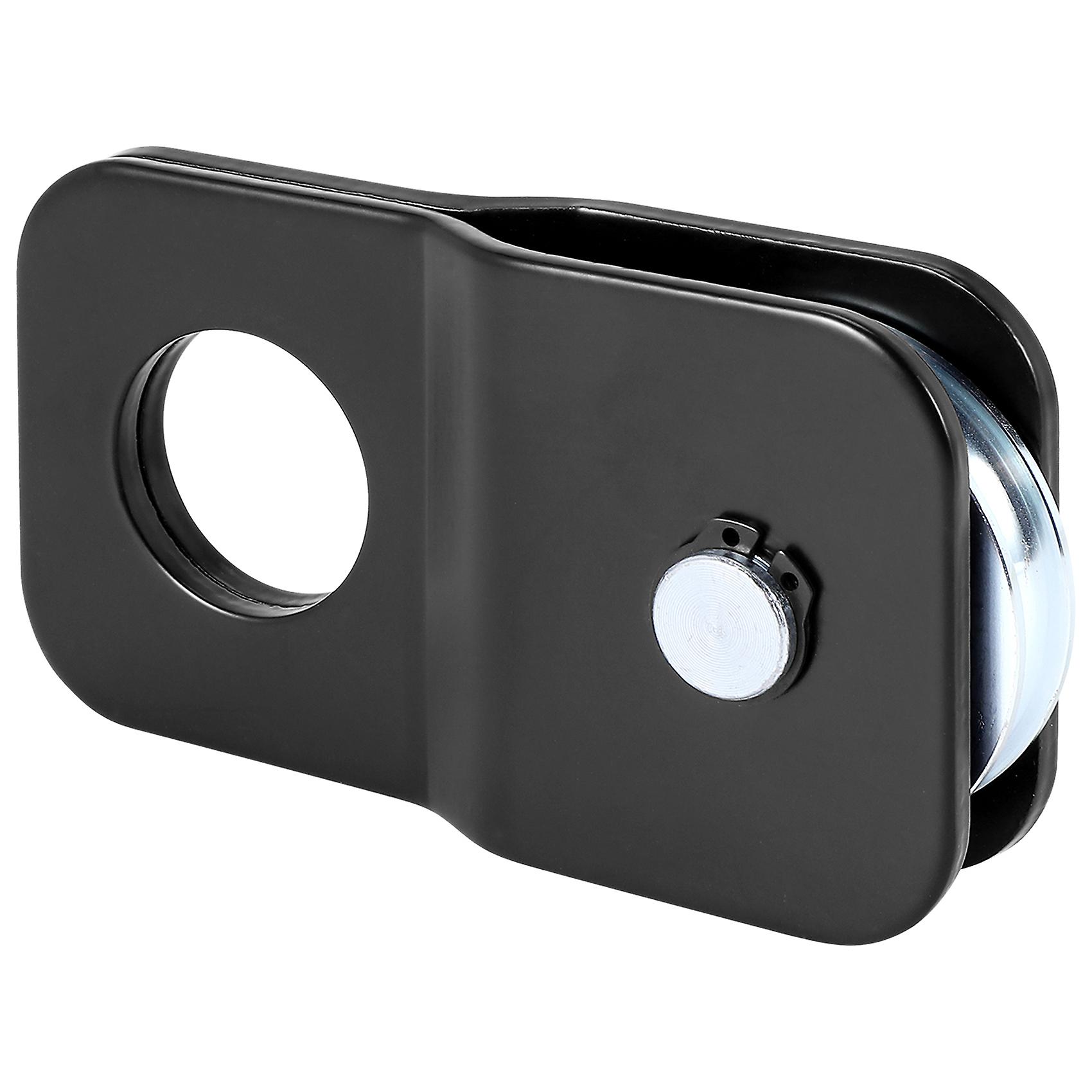
Can you explain the components and design features of a winch pulley?
A winch pulley consists of several components and incorporates specific design features to ensure its functionality and durability. Here is a detailed explanation of the components and design features of a winch pulley:
- Sheave: The sheave, also known as the wheel or pulley wheel, is a central component of the winch pulley. It is a grooved wheel that guides the winch cable or rope. The sheave typically has a V-shaped groove or multiple grooves to ensure proper alignment and secure grip on the cable or rope. The size and design of the sheave may vary depending on the intended application and load capacity of the winch pulley.
- Frame or Housing: The sheave is mounted on a frame or housing, which provides support and stability for the winch pulley. The frame is designed to hold the sheave securely in place and withstand the forces and loads encountered during winching operations. It may have a compact and lightweight design for portable winches or a more robust and heavy-duty construction for industrial or off-road applications.
- Attachment Point: The frame of the winch pulley typically includes an attachment point, such as a hook or a shackle, for connecting the pulley to an anchor or a load. This attachment point allows for secure and reliable connection, ensuring that the pulley can effectively transmit the pulling force between the winch and the load.
- Materials: Winch pulleys are commonly made from durable and high-strength materials to withstand the demanding conditions of winching operations. Steel is a commonly used material for winch pulleys due to its strength and resistance to wear and deformation. Some winch pulleys may also incorporate high-strength alloys or other specialized materials to enhance performance and longevity.
- Bearings: Bearings are critical components of winch pulleys as they enable smooth rotation of the sheave. High-quality bearings are used to minimize friction and ensure efficient operation. The bearings may be sealed or shielded to protect against contaminants and maintain proper lubrication, enhancing the overall durability and performance of the winch pulley.
- Load Rating: Winch pulleys have specific load ratings that indicate their maximum capacity to handle loads. The load rating is determined based on factors such as the strength of the materials used, the design of the sheave, and the overall construction of the winch pulley. It is important to select a winch pulley with a load rating suitable for the intended application to ensure safe and efficient operation.
- Finish and Coating: Some winch pulleys may incorporate finishes or coatings to enhance their performance and durability. For example, a corrosion-resistant coating or plating can be applied to protect the winch pulley from rust and corrosion, particularly in outdoor or marine environments. Surface treatments may also be used to reduce friction, improve wear resistance, or enhance the pulley's overall performance.
In summary, a winch pulley consists of components such as the sheave, frame or housing, attachment point, bearings, and may incorporate materials, load ratings, and finishes or coatings. The sheave guides the winch cable or rope, while the frame provides support and stability. The attachment point allows for secure connection, and high-quality bearings ensure smooth rotation. The materials used are durable and high-strength, and the load rating indicates the maximum capacity of the winch pulley. Finishes and coatings can be applied for protection and improved performance. These components and design features collectively contribute to the functionality, durability, and reliability of winch pulleys in various winching applications.


editor by CX
2024-05-15
